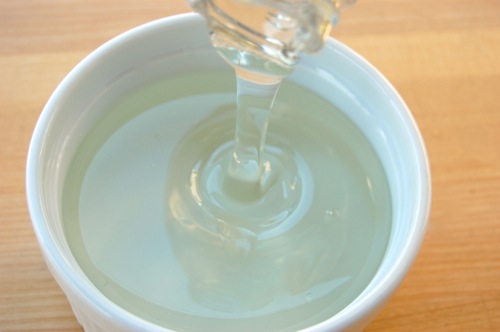High Fructose Corn Syrup

We hear a lot about the evils of high fructose corn syrup (ominously initialized HFCS) these days. It’s the packaged food industry’s most pervasive sweetner, found in everything from Coke to ketchup. Anything that broadly used simply must be evil — an articifially created, chemically modified, fatally addictive hypno-crack. A team effort by the National Corn Growers Association, Columbian drug lords, Dow Chemical, Karl Rove and Satan.
In actuality it’s pretty mundane stuff, made via an almost identical method as conventional corn syrup. If you read that post, you know that mass-market corn syrup was originally produced by adding plant-derived enzymes to a slurry of corn starch to break the long-chain sugars down into short molecules that taste sweet on our tongues. It was a good process, but one that carried certain limitations. Specifically, manufacturers had only a few different types of enzymes at their disposal, and once they got them going they had no way to stopping them. Added to a mass of starch they’d keep slicing and slicing until the long-chain sugars were cut down to their smallest component units: glucose molecules.
That’s not necessarily a bad thing save for the fact that glucose, the simplest of sugars, only tastes about 70% as sweet as table sugar (exactly why that is is still a subject of intense debate among biologists). This type of not-as-sweet-as-sucrose corn syrup made a fine (and frequently less expensive) replacement for molasses, but wasn’t sweet enough to replace actual table sugar in different applications.
All that changed in the 1960’s when a new enzyme called glucose isomerase was isolated from bacteria. The enzyme was capable of converting glucose into fructose. The advantage there being that fructose tastes 30% sweeter to our tongues than sucrose (table sugar). By blending that fructose with glucose, corn syrup makers finally had a way to make a syrup whose sweetness was on par with table sugar. High-fructose corn syrups are around 50% fructose and 40% glucose. The remainder is water and longer-chain sugars.
A common myth is that high-fructose corn syrups are addicting because they taste so sweet, and the human tongue has an inexhaustible appetite for sweetness. This is untrue. Syrups and fondants that are only 10% sweeter than table sugar are unpalatable to most people. These days we have the technology to create substances that are many million times sweeter-tasting than table sugar, yet their only use is in greatly diluted form so they approximate the sensation of sucrose on the tongue.
What really gets me is http://en.wikipedia.org/wiki/Agave_nectar – it’s usually got more fructose than HFCS, but you see the sort of people who decry HFCS using it a lot. Even worse, agave nectar drives up the price of tequila!
You read my mind, Eric! 😉
– Joe
fructose is not more complicated than glucose, seems its one less stereogenic center would make it less complicated.
My mistake James! Thanks for the correction!
– Joe
Sorry, i wish i could edit that last comment to not sound snarky. Thanks for posting some level-headed comments about this.
I took no offense, James! As I often say, I rely on my readers to keep me honest. Thank you for weighing in on the subject, truly.
Cheers,
– Joe